Heiba joined Barnet artist and London National Park City Ranger Becky Lyon for a green walk from Brent Cross to Finchley Central, designed to spark a (re)connection with nature and promote more sustainable modes of transport in the borough
Did you know you can take a scenic, green walking route linking Finchley Central and Brent Cross? In collaboration with Barnet Council and using the Slow Ways walking network, Barnet artist and London National Park City Ranger Becky Lyon met with myself and group of early-risers on a clear Saturday morning to guide us through a series of picturesque backstreets that passed through Brent Park, along the Mutton Brook and Stephens House & Grounds.
Over ground
I was running late and already worried about how I’d spot the walking group. I needn’t have; as soon as I jumped off the Northern Line and rushed down the steps of Brent Cross station I spotted a group of about ten people in a combination of all-seasons outdoor clothing. A familiar face, Annie, a curator working in Brent welcomed me and we compared our walking attire while Becky skilfully corralled the group (which included Jelly, the dog). We set off, a group of almost-strangers, a dog and a bike to a nearby corner of Brent Park.
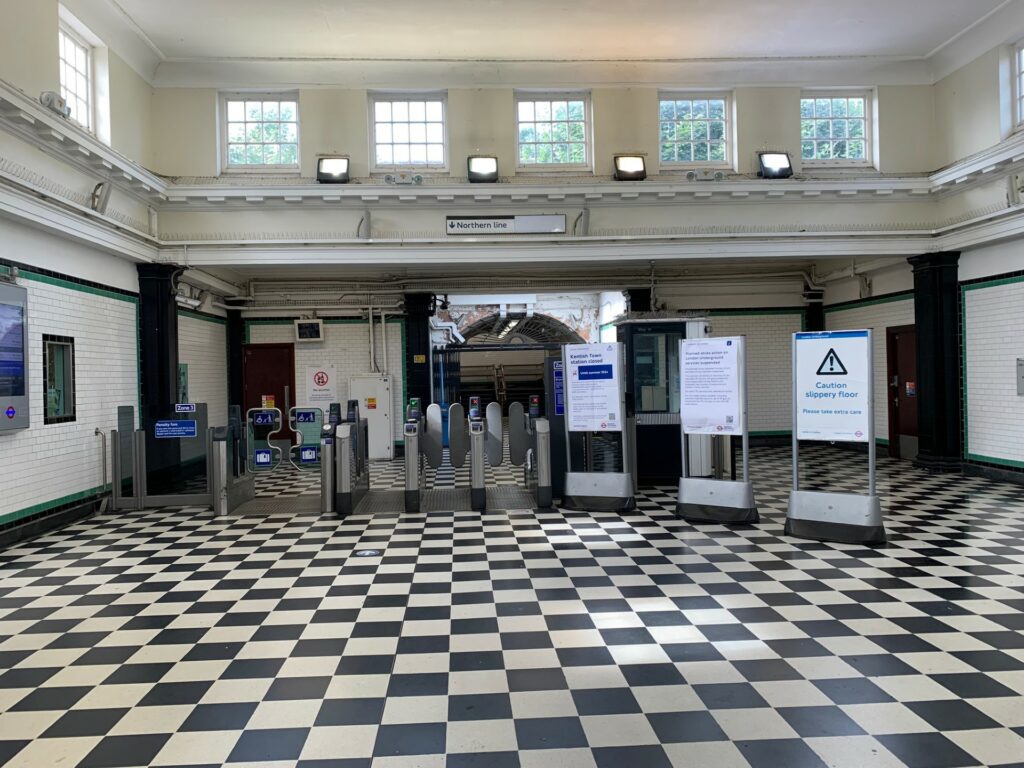
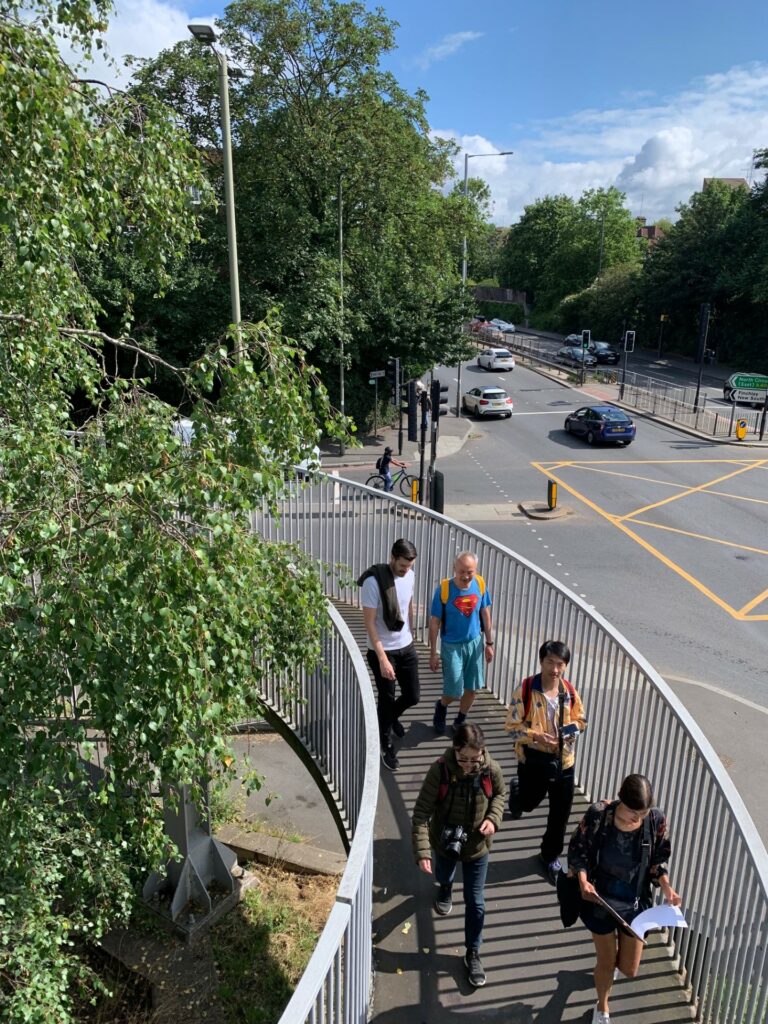
I’d over-anticipated the English summer weather and bought waterproofs just in case, but it was unexpectedly warm and I hurriedly changed on the way. Beautifully dressed families passed us in the opposite direction on their way to Shabbat Saturday services. Annie and I caught up on recent work and life events, and as we crossed a busy, noisy flyover I silently struggled to imagine what the green route from A to B might be.
Castle of dreams
Becky soon pulled us off the pavement and into a woodland path. Blinking, we adjusted to the shade, and introduced ourselves. We shared where we had come from; some had travelled from nearby Colindale and others as far as Brockley. Many had a connection to the borough in some form or other, and our curiosity had bought us all together this Saturday morning. The first object(s) of curiosity stood before us in the form of two unusual stone turrets, history and origin unconfirmed, and a stream running between them.
There were a few theories as to their origin, but Becky invited us to take liberties with our imagination and create our own story. The invitation to imagine, to use it as a tool to knit a connection between ourselves and our surroundings, and to explore the idea of separation from our environment, would become an important and recurring theme of the walk.
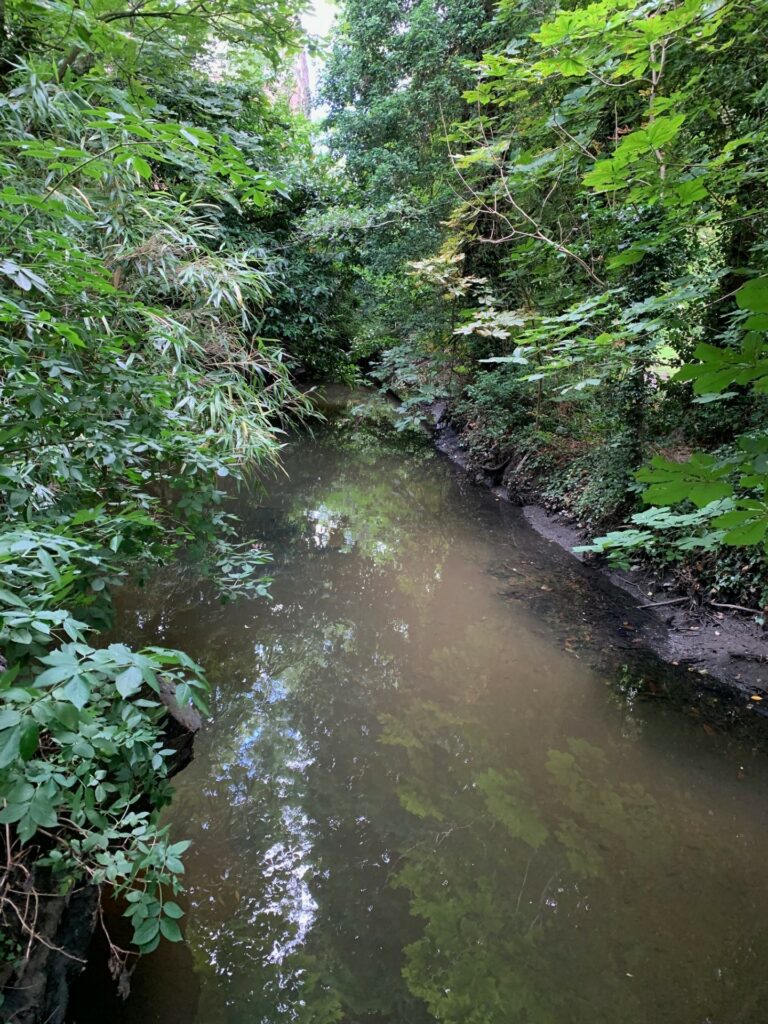
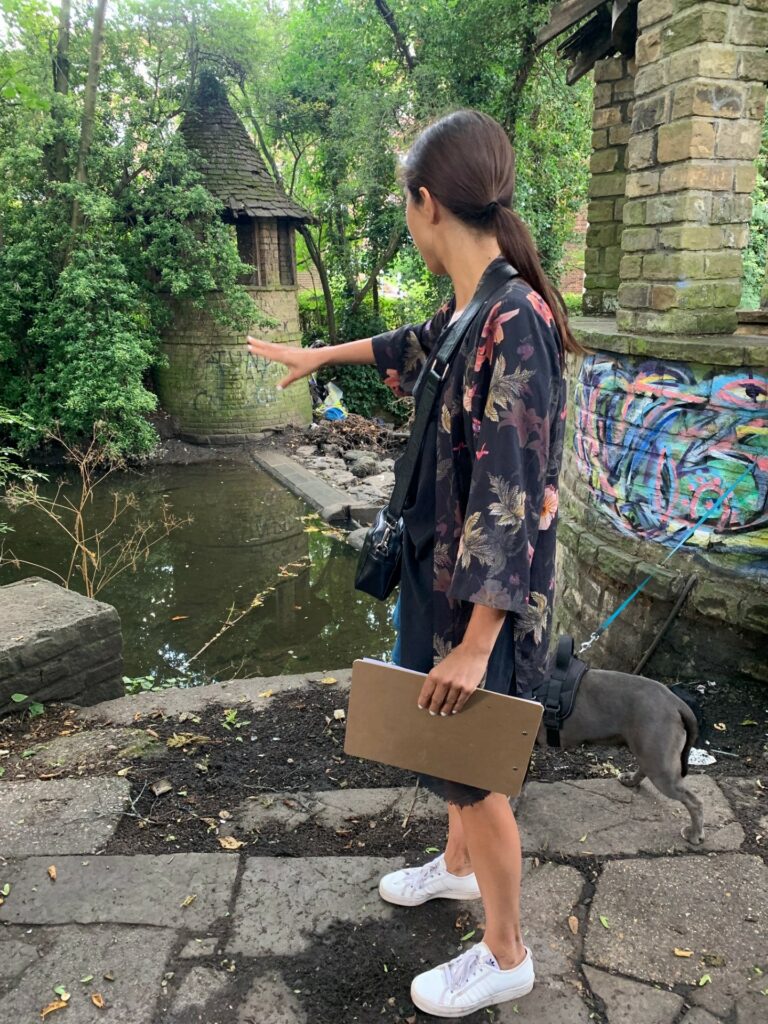
The stream between the turrets was part of the River Brent, which flows alongside the A406 North Circular Road through Brent Park and then under the Northern line to Brent Cross and the Brent Reservoir. The Brent River would make a series of cameo appearances along our walk and I felt like the turrets were symbolic of passing through a doorway as we stepped into a journey alongside it.
I felt like the turrets were symbolic of passing through a doorway as we stepped into a journey alongside it
There was a stillness next to the river at odds with the rush of the A-road just above our heads, as if we’d stepped into an alternate time-zone here under the dappled light and blackberry bushes where things moved a little slower. Soon enough we’d cross a small bridge.
Convergence and confluence
Our first in a series of rest-stops was next to the “decoy”, a pool covered in algal bloom. A heron looked the other way as we relaxed on the grass and began a poetry journaling exercise (or a “flow-etry” exercise). Becky’s prompts invited everyone to find words to express how their new surroundings made them feel. It opened up a conversation about how we didn’t need to leave the city and go into the “big C” countryside to experience the “outdoors”, and how the illusory binary of urban space versus nature didn’t hold up to scrutiny. Once you paid attention to nature, you would begin to call it in, wherever you were.
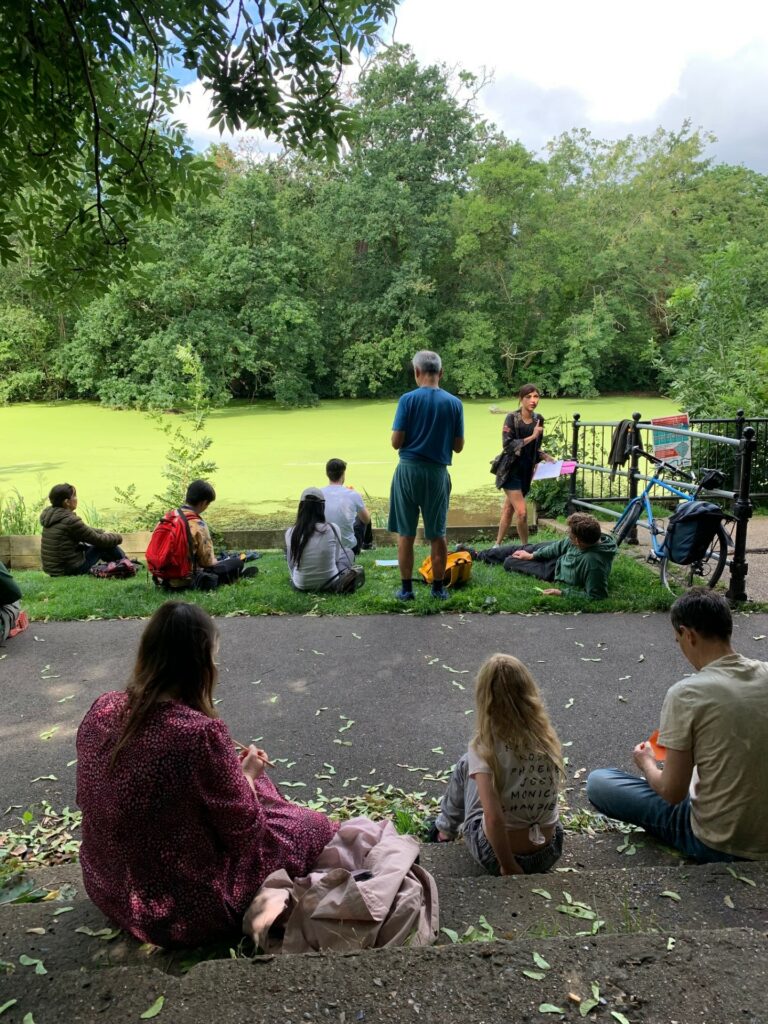
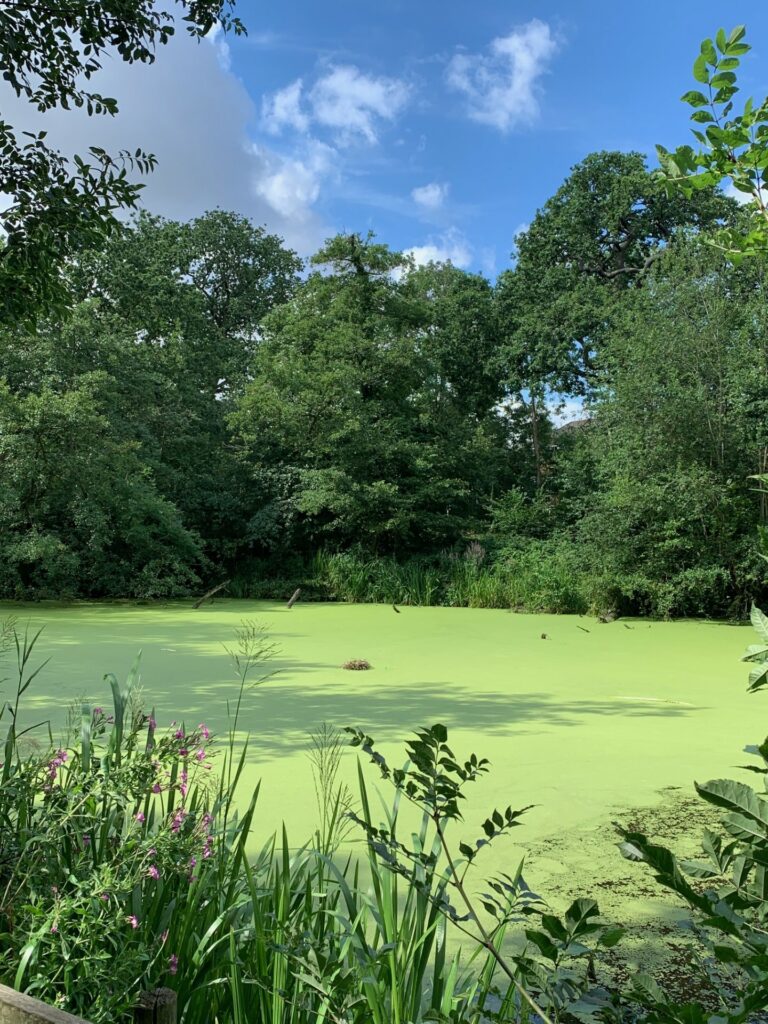
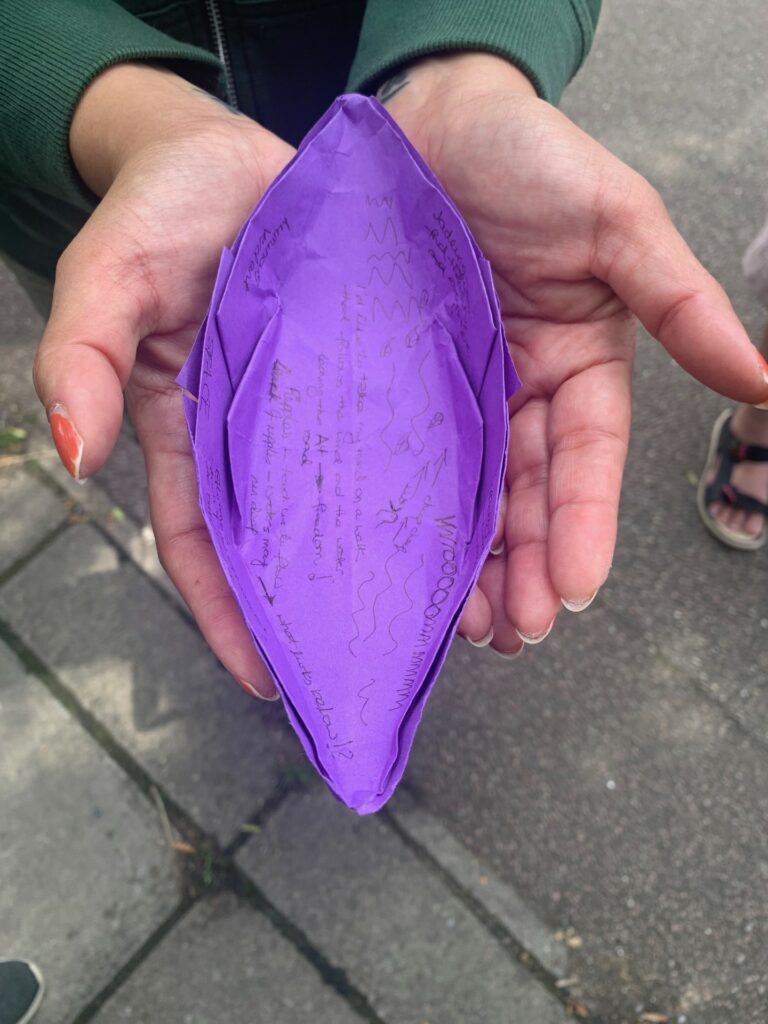
We’d stop again soon after, at an especially interesting point, a confluence where three watery bodies met — the Mutton Brook, the Dollis Brook and the River Brent. Their names pointed to past ecologies; the name Dollis was likely derived from the Middle English word ‘dole’, meaning the shares of land in the common field. Becky invited us to take note of the significance of this confluence; who decides the boundary between them? Does the water know where it is? How does our presence meet with theirs? Where do they end?
I wondered what names for these everyday phenomena might have existed in previous generations, and how our knowledge of eco-linguistics might have changed over the years alongside our attention
She encouraged the group to find names for their observations; what do we call the light twinkling on the water? What is the silhouette of the trees on the pavement called? It made me consider how a cultures’ language is reflective of the things they, historically, had paid attention to. I wondered what names for these everyday phenomena might have existed in previous generations, and how our knowledge of eco-linguistics might have changed over the years alongside our attention.
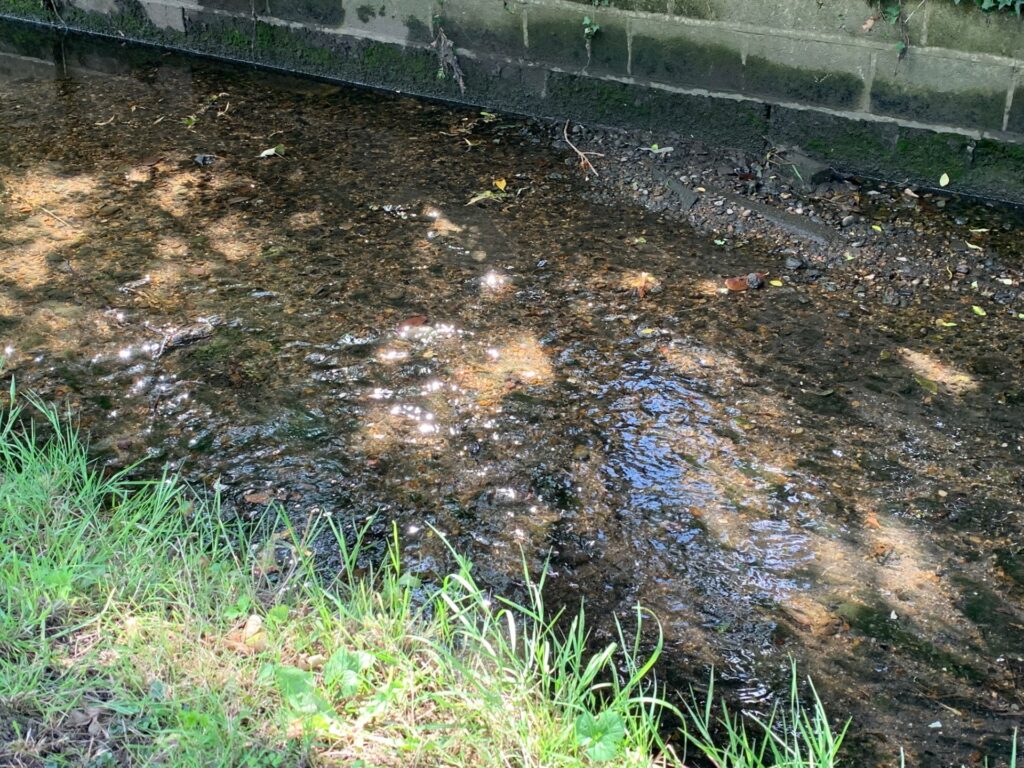
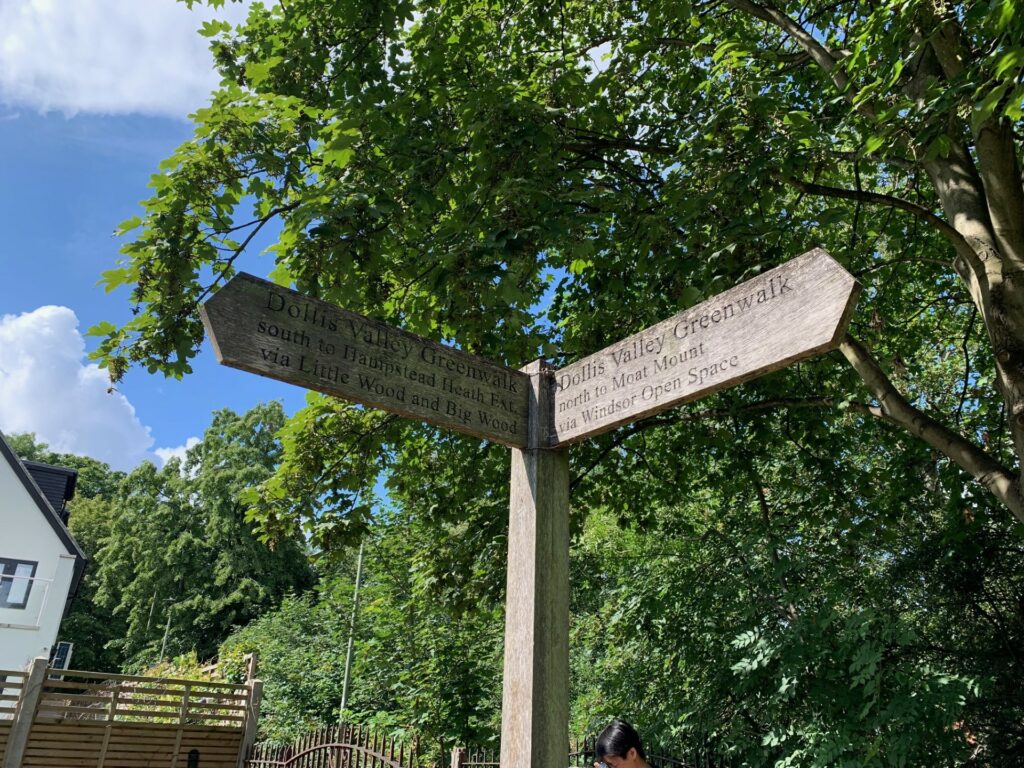
Acts of attention
We had three routes we could follow, along each waterway, but for the purpose of this tour we followed Mutton Brook for a while. We stopped just off a path and sat in the grass for a listening exercise, a kind of journaling with our bodies. Closing our eyes we focussed on our breathing and tried to tune in to the different sounds around us. The motorway hummed rhythmically almost like a heartbeat, and birds chattered. An insect’s cricket sounded almost like a squeaky bicycle. “This is the reality of our listening experiences in the city, ” Becky noted, “How do we tune into the ecological community, and also ourselves?”
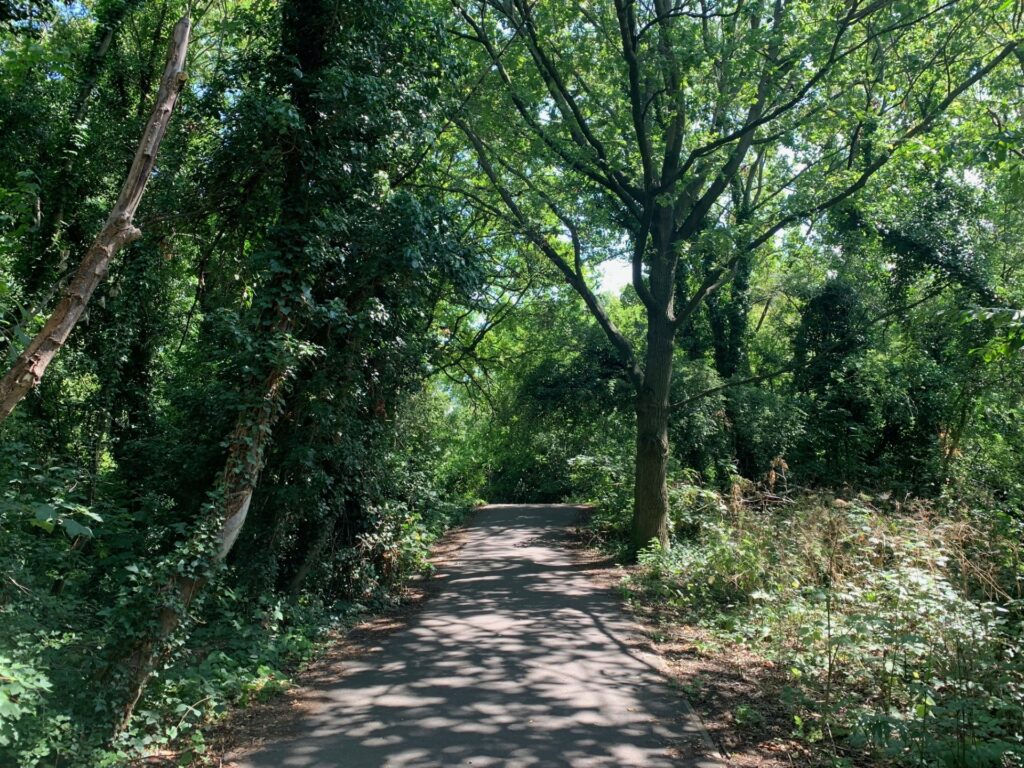
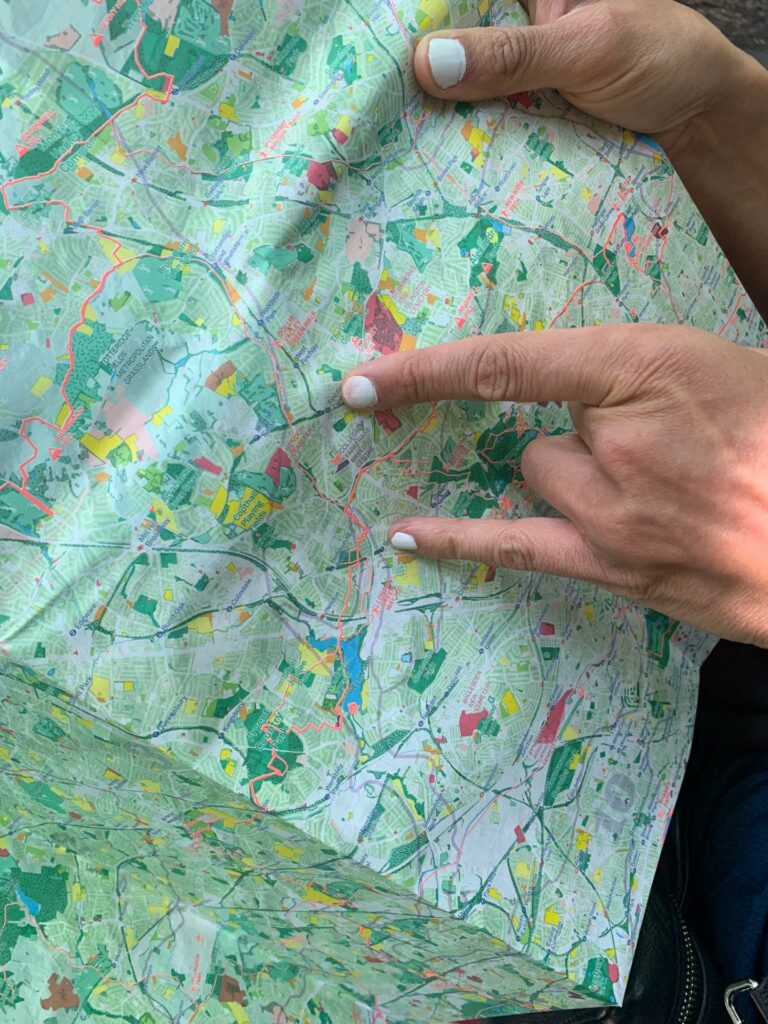
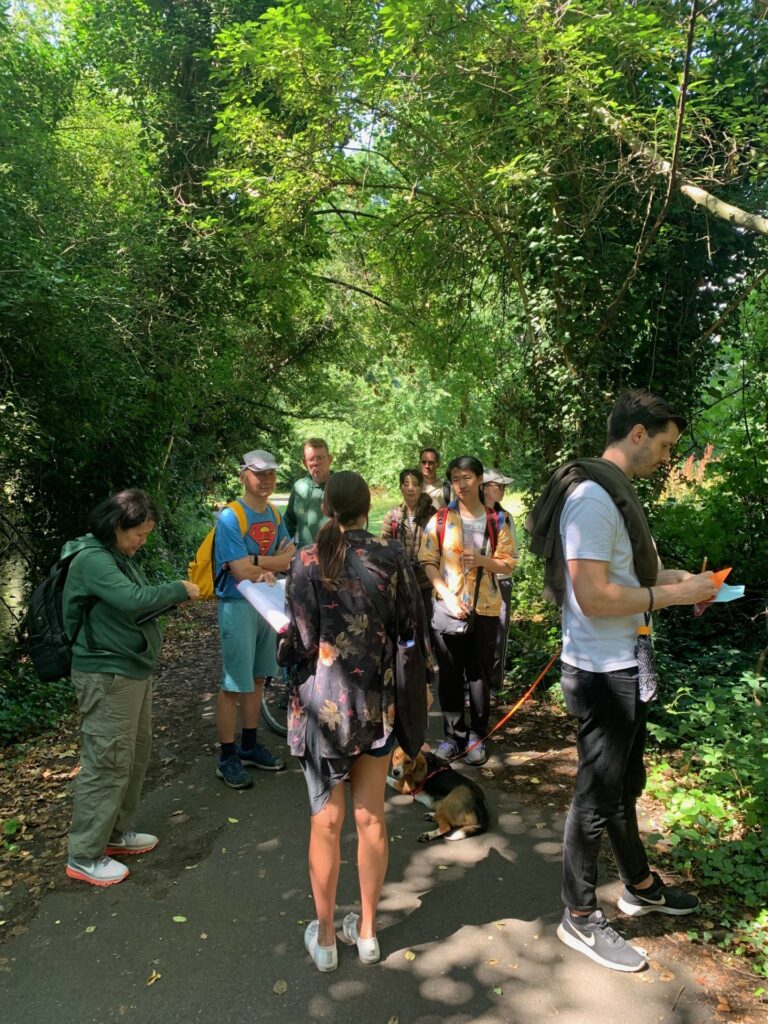
For the moment it was time to head back “out there”, to the confluence of junctions and dual carriageways. I felt sensitive to the sound but attuned differently; the motorway had its own heartbeat. I was eager to get off the residential backroads though, back to greener views, and soon we reached Stephen’s Park.
The final stop
I didn’t know what to expect when we passed through the brick archway, but it was not a small shaded rose garden with lush green hills in the background. It always amazes me how much there is still to discover on our doorsteps. Stephen’s House and Gardens, a Grade ll listed house with landscaped gardens was founded by Henry ‘Inky’ Stephens (heir to the Stephens Ink Company) and seemed to be a serene local gem.
A ‘dapple theatre’ was the dancing silhouette of leaves on pavement, and ‘sound-gazing’ was to listen intently to what’s around you
We rested on a small hill for our final journaling exercise where we reflected on the walk. Some of the group shared words they had created for the previous prompts — a ‘dapple theatre’ was the dancing silhouette of leaves on pavement, and ‘sound-gazing’ was to listen intently to what’s around you.
With that, Becky asked us to look up at the sky and consider one last question: where does the sky end and where do we begin?
Interesed in going along to a led walk? Click here to view and book onto an upcoming led Slow Ways walk. Why not sign up to walk and review Slow Ways. You can also find and follow us on Instagram, Twitter and Facebook.
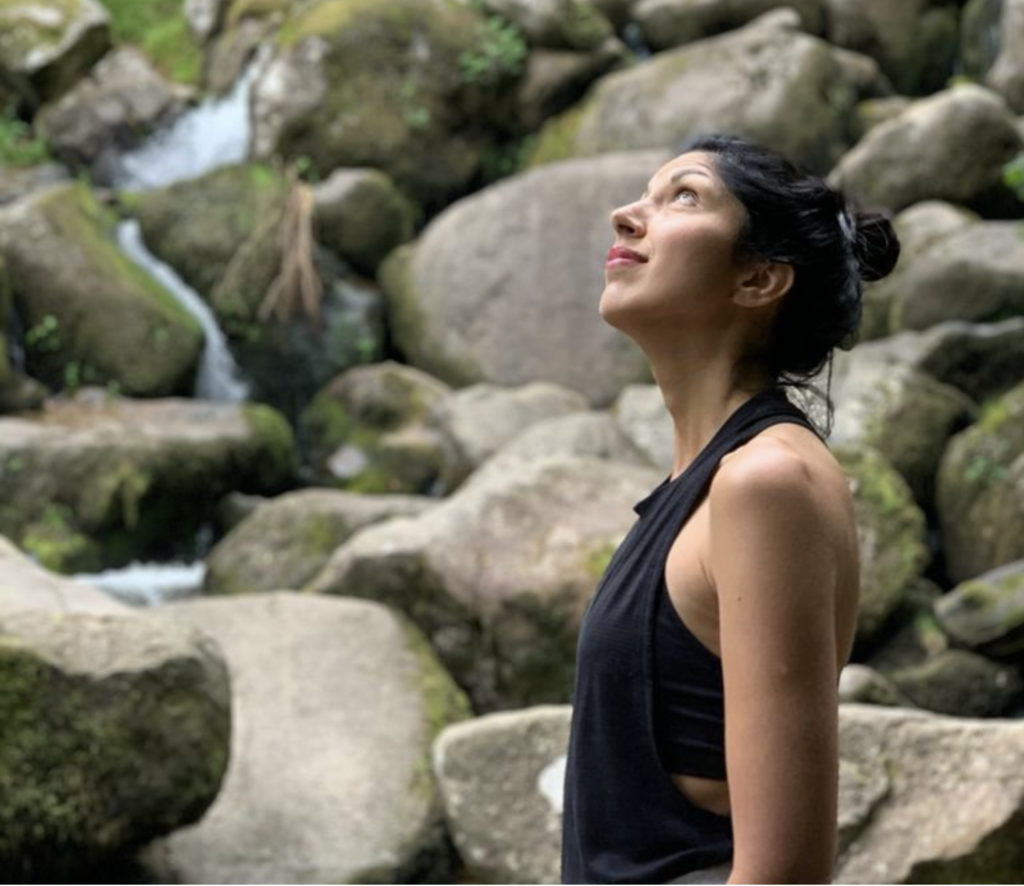
Becky Lyon
Becky Lyon is an English-Jamaican artist working at the intersection of art, ecology and community. She is Grounder of Ground Provisions – an artist-led, schooled-by-the-forest for grown ups hosting participatory gatherings, walks, sensory seminars and reading groups for a range of audiences. She has an MA Art & Science from Central Saint Martins and an MA Art & Ecology from Goldsmiths University and is a volunteer London National Park City Ranger.